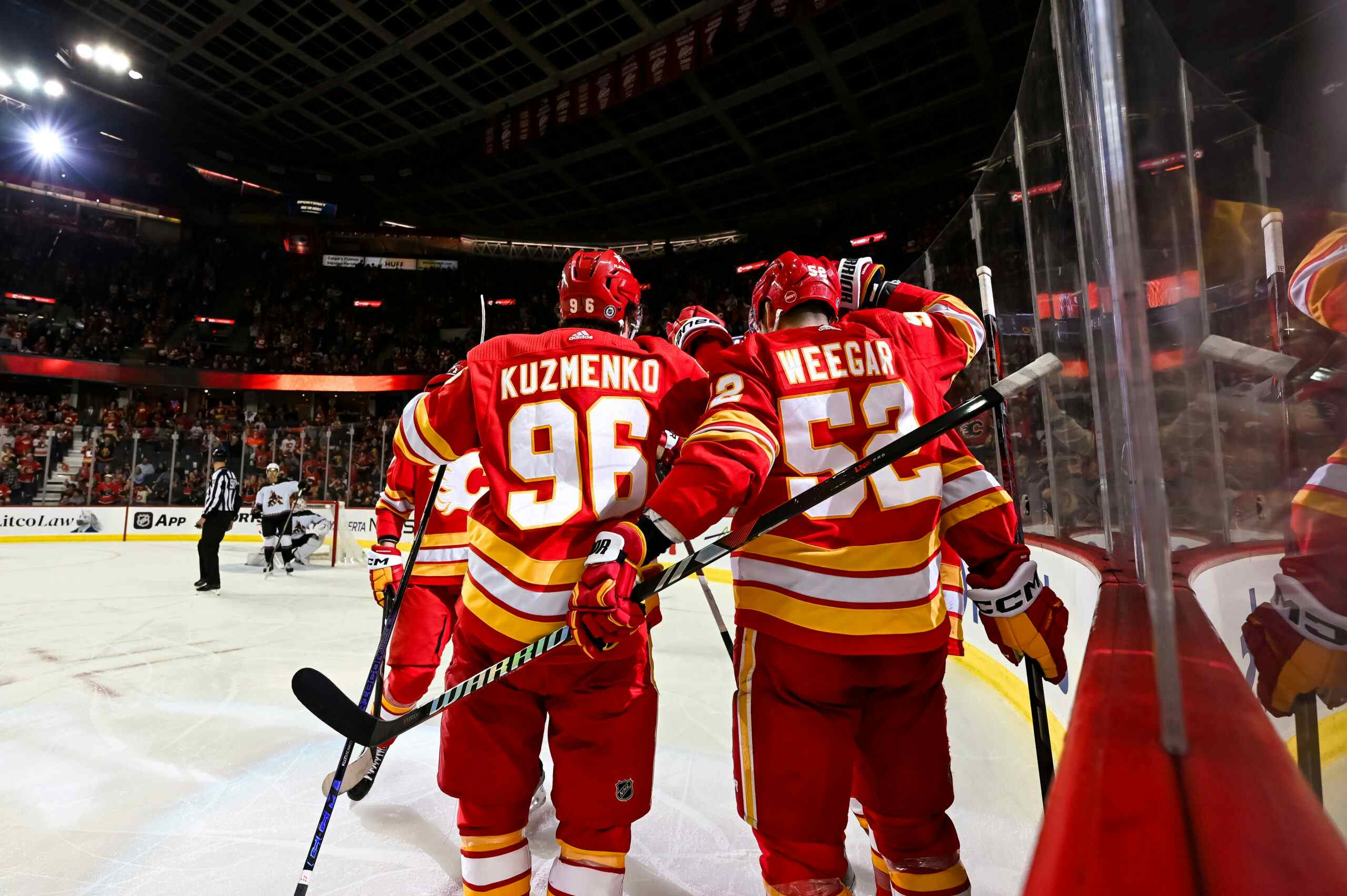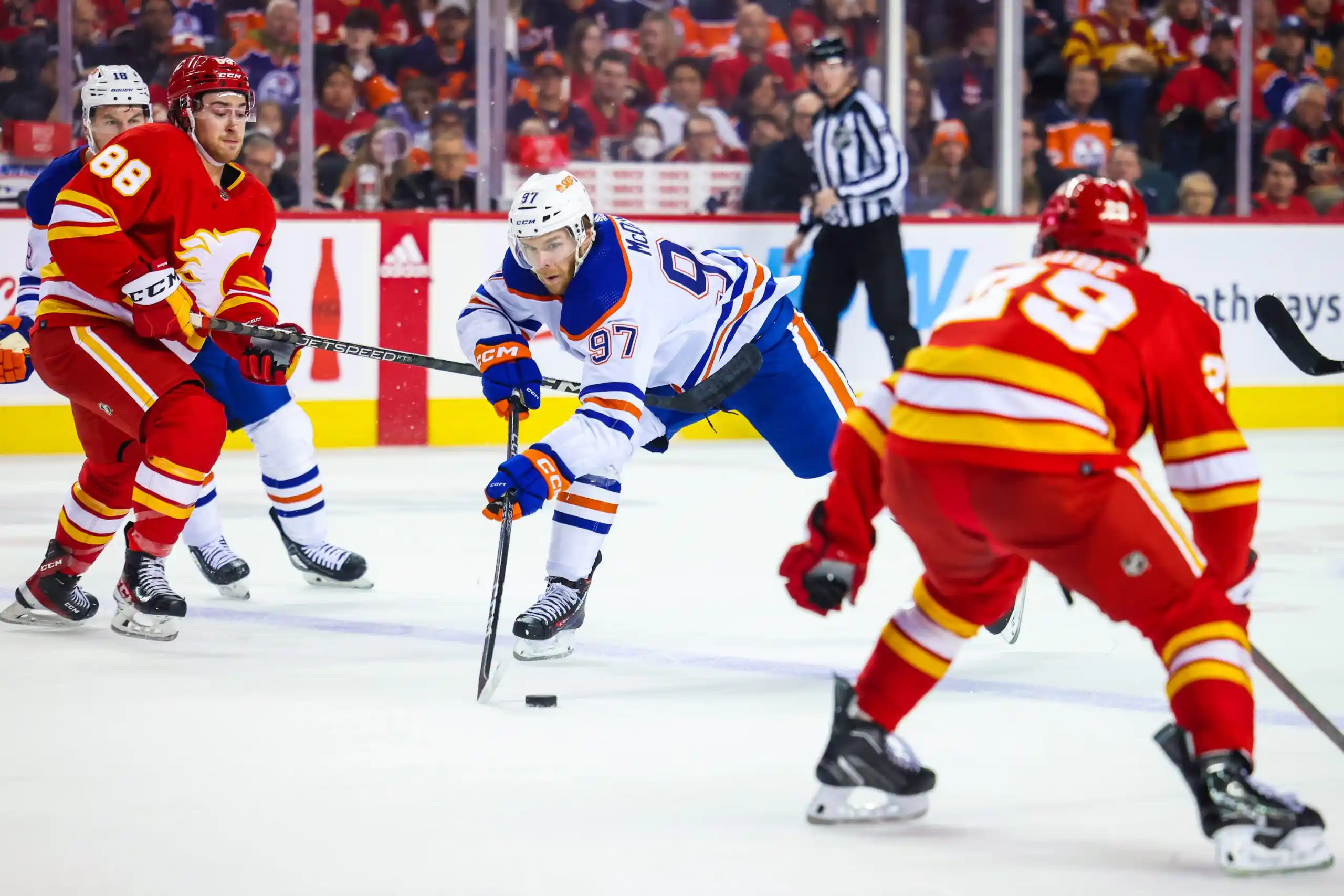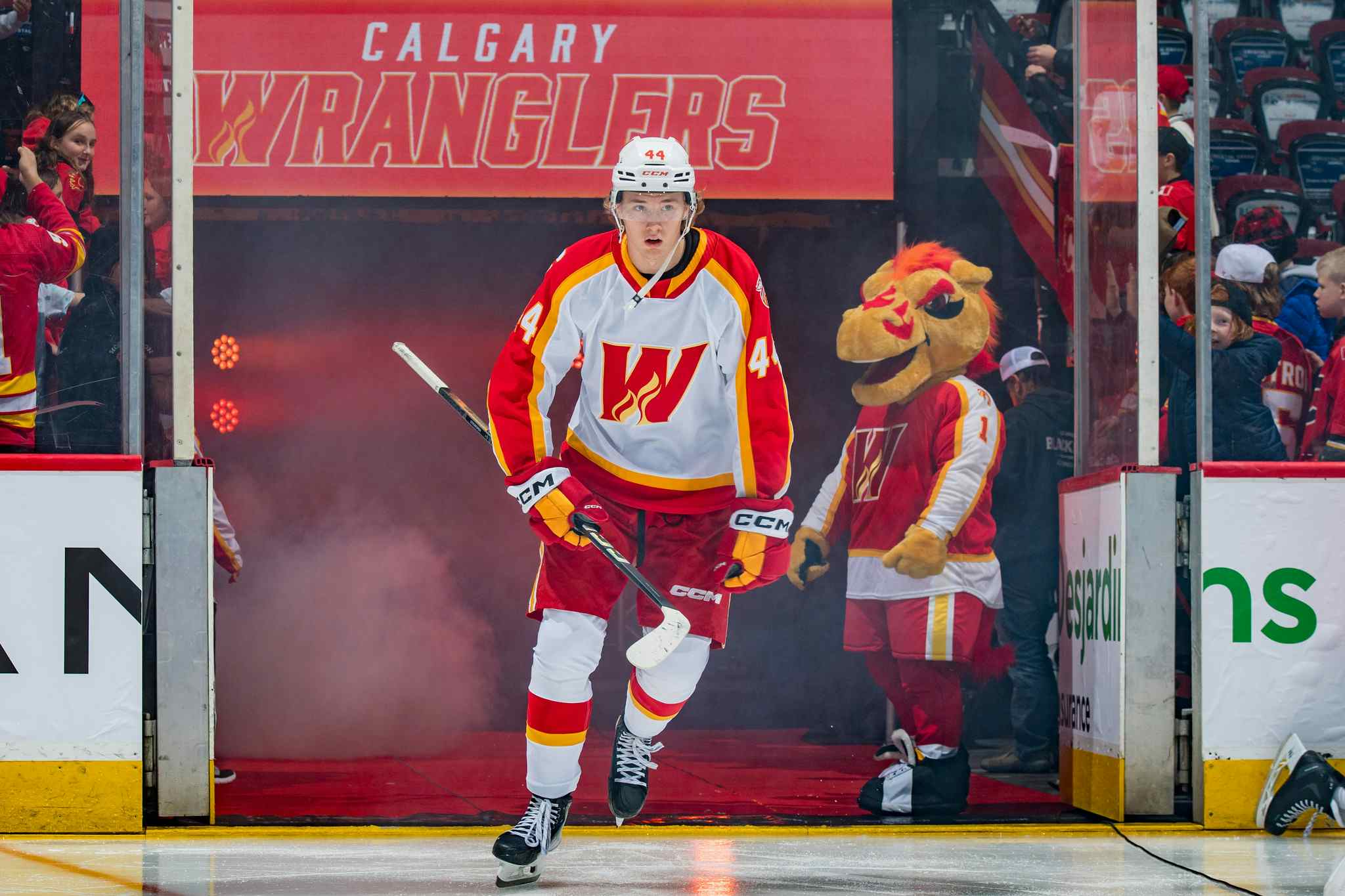Five things: Silly season
By Ryan Lambert
9 years ago1. Okay, now I’m positive
I’ve long said that I don’t think Mike Cammalleri was going to come back to Calgary, and now given the term and money distributed to players in the last day or so, I’m convinced he’s gone unless the Flames want to get into a shoving match.
The contracts given to Marian Gaborik (better than Cammalleri) and Ryan Callahan (worse) yesterday have me pretty convinced that when it comes to long-term deals, teams will not be scared off by things like age or durability. Gaborik and Cammalleri are both 32, and the former got seven years out of Los Angeles, albeit at a relatively low price point. Callahan is three years younger, but got six years and $5.5 million out of Tampa despite not producing as much and being all but guaranteed to miss at least a quarter of those seasons, as he does every year.
Cammalleri has to see those contracts and start salivating. Again, his skill falls roughly in the middle of these two players, in my estimation, and he’s likely going to be one of the best wing options on the market this summer. Teams that, ahem, “missed out” on Callahan, or didn’t get a crack at Gaborik, might therefore be anxious to take a run at Cammalleri, who can provide them with goals (20 at even strength in just 63 games last season, on an unproductive team), positive possession play (plus-6 corsi relative, and positive territory on a team that got killed this year) and “leadership” or something like that.
I don’t know that he necessarily commands as much as Callahan, because for some reason people consider Callahan to be A Winner, but $5 million per for five, six seasons sure isn’t out of the question for Cammalleri. I think he has something to contribute now, but I’m not sure that ability is going to be around for much longer.
If those are the terms, it’s not really a bidding war the Flames should be getting themselves into. The problem is they’re going to — of course they are — because they don’t really have many other options.
2. Goaltending rumors
Meanwhile, it seems that the Flames are going to let Joni Ortio continue to develop in the minors rather than back up Karri Ramo for the big club, which is a good idea. As such, they need a reliable backup netminder of their own, probably a veteran.
I’ve seen some connections with James Reimer, which makes some amount of sense, I suppose. The Leafs (oddly) are basically looking to offload his rights, and they’re going to do it for very little. A conditional pick perhaps. Calgary needs a backup, he’s pretty good. The connection is there. It makes sense. He even serves as something of a security blanket in case Ramo isn’t as good as the Flames think he is. Not that you sneeze at .911 in 40 games last season, but there is reason to be somewhat wary of his ability to routinely be a roughly average NHL starter.
But that might serve as a stopper for Ortio if he’s the real deal (still too early to tell) and goaltending controversies generally don’t end very well. So maybe they take a flier on Reimer — remember, Burke brought him aboard in Toronto, so he’s quite familiar with the player’s work — and maybe they don’t. I would consider him a good option.
Perhaps a better one, though, from an organizational standpoint, is Tomas Vokoun. He’s generally pretty good at this, and coming off a health issue that might be a major point of concern for some teams. He won’t need to be around as long as Reimer would, necessarily, and that might clear the way for Ortio sooner if Ramo doesn’t work out.
This isn’t a bad problem to have, by the way. But the Flames need someone, and those might be the two best options on the market. Beyond that, the market is pretty slim. Maybe you give Ilya Bryzgalov a whirl just for the entertainment. Who knows?
3. Lack of recognition
You can’t really get too upset about the NHL awards because they’re voted on by a bunch of people who really only watch their own teams’ games, and then look at NHL.com for the rest. This isn’t tried-and-true, through-and-through, of course, because some people obviously also look at corsi and zone starts and all that, but for the most part, they struggle to “get it right” a lot of the time.
This is particularly true if good players were on bad teams. For instance, Alex Ovechkin, who led the league in goals this season, got the lowest vote total (just one fifth-place ballot cast for him) of any 50-goal scorer in recent memory. It was argued to me by Craig Custance, who’s a very smart guy overall, that he couldn’t have been all that valuable if his team didn’t make the playoffs. What’s that old Jay Feaster quote about not having Kiprusoff? “Is there a place lower than 30th?” That’s the Caps without Ovechkin.
Anyway, then there’s Mark Giordano. He was arguably the best defenseman in the league this season, but he finished just 10th, with a single first-place vote to his name. Most voters left him off their ballot entirely. Now, I’m not totally convinced that Giordano suddenly became an elite attacking defenseman this late in his career — his share of individual corsi events for when he was on the ice jumped from the high teens to 25 — but nonetheless you have to praise a good season when it happens. That he was overlooked by so many voters shows a lot of ignorance, but for the PHWA that’s really nothing new.
4. Interesting data
A move the Calgary Flames have made in the last few years, which I think is clearly paying off in terms of boosting the quality of prospects the team generally has now versus five years ago, is that they’ve taken to drafting a lot of college players. Now, a new study — and granted, it’s from a vested interest called College Hockey Inc. — shows that doing so is pretty smart.
The chances that you’ll get 300-plus games out of a first-round draft pick is slightly higher if he’s from the NCAA versus junior, 70 percent to 64 percent from 2000-06. There are a lot of reasons for this, but perhaps chief among them is that it’s easier to judge how college talent will translate to the pros than junior (because the former necessarily means a lot of minutes against grown-ass men).
Further, it’s usually a much smarter strategy later in the draft, in particular. Of all the guys who were in the NHL last season after being selected in the fifth round or later, 48 percent were NCAA players, compared with 52 percent split between the CHL, Europe, or other leagues.
If you click that link, you’re going to see roughly a million graphs that all say the same thing: College hockey is a very fertile bit of ground in which to let prospects develop. The Flames know that, and they’re reaping the benefits.
5. The schedule
Finally, with the NHL schedule now out, the good folks at On the Forecheck have once again compiled all the data and checked to see how much travel each team is going to do. Shockingly, the Flames are only 17th in the league in terms of how many miles they have to go (a little less than 39,000), and tied for the second-smallest number of back-to-backs (10) as well.
Last year, the Flames had 12 back-to-backs, and were traveling a lot more (nearly 49,000). Only three teams traveled more than that. This year, their biggest comparable in terms of travel is the Bruins. And Boston has to travel 64 more miles.
I’m not sure that’s going to have any tangible effect on performance, but it’s interesting nonetheless.
Recent articles from Ryan Lambert






